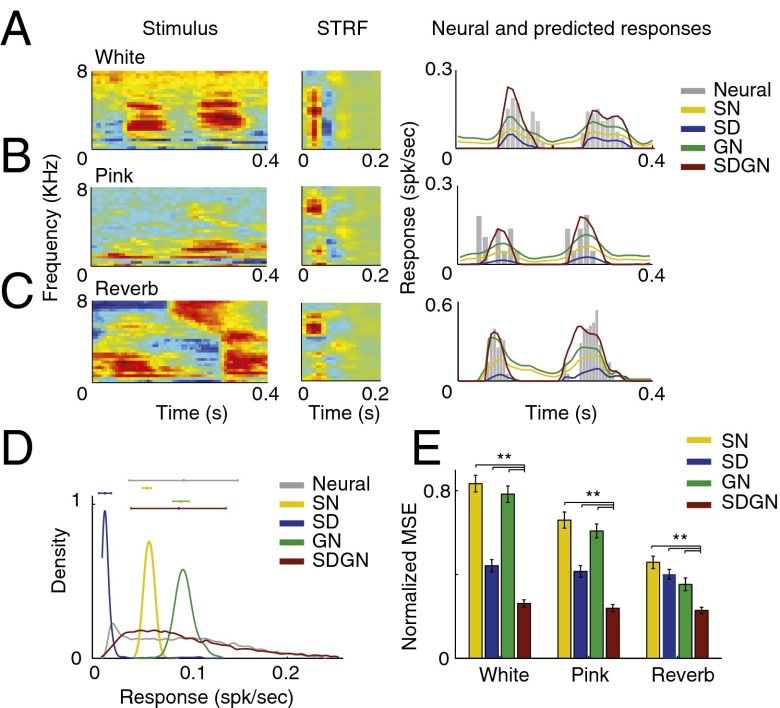Fig. 4.
Example predicted neural responses in noisy conditions. (A−C) Examples of distorted spectrograms and their corresponding actual and predicted neural response for SN, SD, GN, and SDGN models for (A) white noise, (B) pink noise, and (C) reverberation. The predicted responses using the SN and GN models encode the noise even in the absence of the stimulus. The predicted responses using SD model alone, however, are able to eliminate the noise floor by removing the average baseline activity, but result in a significant reduction in spike rate. SDGN model produces the most similar predicted response to actual neural data. (D) Histogram of predicted neural responses for SN, SD, GN, and SDGN models show their overall effect on predicted responses. (E) MSE distance of predicted to actual noisy neural responses for SN, SD, GN, and SDGN models shows the efficacy of SDGN (**P < 0.01, t test).

